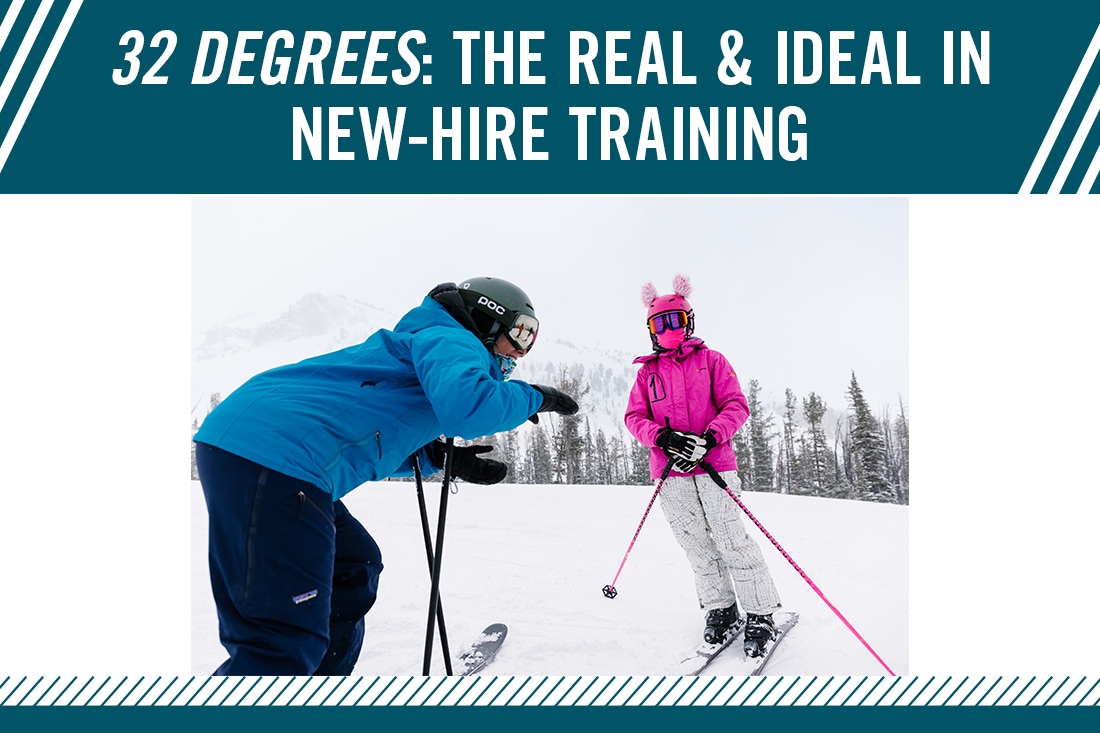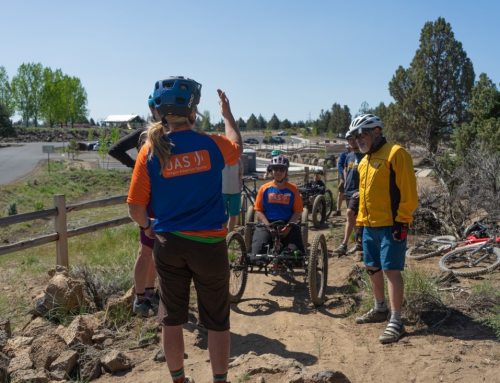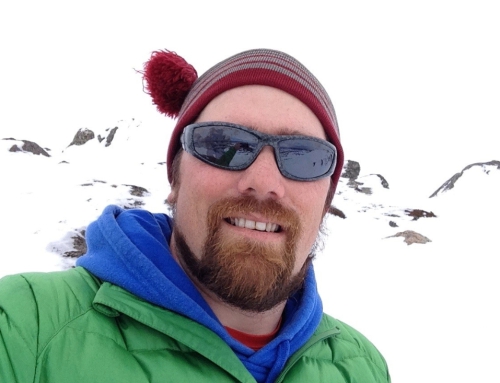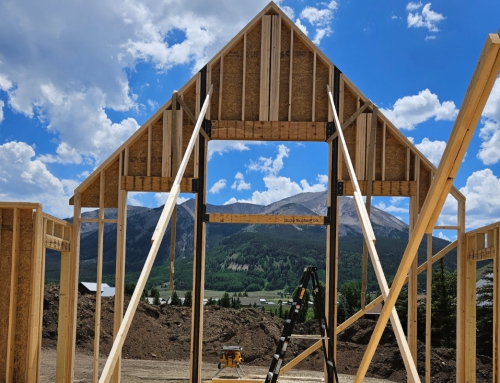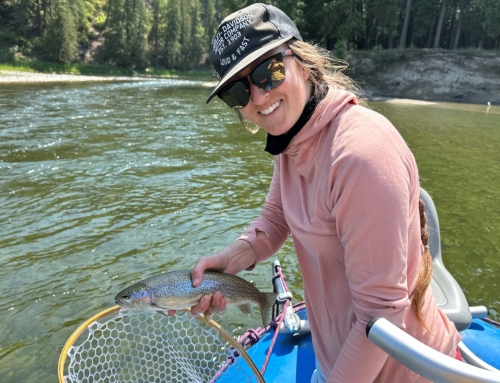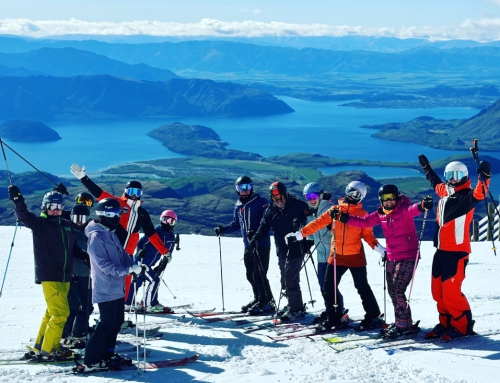32 Degrees: The Real & Ideal in New-Hire Training
This article by Mark Aiken originally appeared in the Fall 2023 Issue of 32 Degrees.
Come October, November, and December, resorts across the country will be prepping newly hired instructors – the future of our profession – for their first seasons. If you’re a seasoned snowsports professional, think back to your training as a new hire. Was it life-changing? Too much information? Indoors? On-snow? A combination of both? The fact that you kept at this teaching thing must mean you got something out of it… and your trainers saw something in you. Well done.
If this is your first season out of the gates – or you have a training role within your ski or ride school – the following insights can help set the scene for your success.
A Goal to Engage
“The ultimate goal of new-hire training is to begin to turn new hires into great instructors – instructors with enough experience and knowledge to teach anything and anyone,” says Nathan Jarvis, a longtime instructor and trainer at Park City, Utah.
Snowsports managers, supervisors, and trainers face a tall order when it comes to prepping people who have never taught a ski or snowboard lesson before – all in time for a new season. Think of all the information in the noggins of great instructors. As sometimes happens, it’s easy to fall into the trap of covering too much at new-hire training events.
“Anyone involved with training has probably experienced the point when you realize you’re over-training or over-communicating with someone,” says Katie White, ski school director at Portillo, Chile; assistant training manager at Montana’s Yellowstone Club; and a member of the Northern Rocky Mountain Region’s board of directors. “Where they have reached their capacity to take in more information.”
To avoid overload, Jarvis suggests focusing on a few short-term goals: providing some essentials and getting new instructors to like the job. “They need to know how to engage with guests in a way that makes it the best day ever,” he says. “Not just for the learner but also for the new instructor – if we want them to come back next year.”
What exactly, then, are the essentials? How can trainers avoid “avalanching” information on new hires to the extent that they become overwhelmed at training and therefore under-prepared when it comes time to teach? I spoke with several experts from around the country to learn what should happen at new-hire trainings, what shouldn’t happen, and, what all this means for new and veteran instructors alike.
Part of an Ongoing Process
“Training to become an instructor should be ongoing,” says Dan Healy, chair of PSIA-AASI’s Snowsports Management Advisory Committee and vice president of recreation services at Solitude, Utah. In other words, no instructor exits new-hire training with a firm grip on everything there is to know.
Indeed, much of the knowledge gained over the course of an instructing career comes through experimentation, observing peers, and even making the occasional (or frequent, depending on the instructor) mistake. Many of the hundreds of split-second decisions that can spell the difference between success and disaster must be learned by teaching actual lessons. Good decision-making skills come with experience – like remembering to pack a stuffy in your pocket before a lesson with a 3-year-old, knowing whether to take students on a side hit by the edge of a beginner trail, or recognizing when to explore more challenging terrain or features.
“We usually have a meeting with the new hires after MLK weekend, to have them share some of their experiences, questions, and/or concerns,” says Gail Setlock, snowsports school director at New York’s Gore Mountain. Then, she says, trainers and managers tailor training clinics to address the issues they experienced.
“New-hire training should be one component of a strong and organized internal training program,” says Healy. This program doesn’t just start when new hires show up for training; it begins when they apply for a job and continues when they’re hired and onboarded. And it certainly shouldn’t end with the conclusion of the new-hire training program. According to Healy, it should set the table, and stimulate their appetites, for continued learning once they start teaching.
Most of the trainers and managers I spoke with said the successful and comprehensive new-hire training programs don’t rush; training staffs may spend upwards of a week with new-hires, showing them the way.
Don’t Re-invent the Wheel
In addition, they place great value on steeping new-hire training in PSIA-AASI methodology. Joe Forte, the adventure sports and snowsports director at Pennsylvania’s Blue Mountain, points out that when applicants accept a job offer at the area’s Mountain Adventure School (so named for its year-round emphasis) they are enrolled in a six-part new-instructor training program – all required before they can start teaching.
The first two parts, which new-hires can complete at their convenience, include free webinars PSIA-AASI offers through thesnowpros.org. Then, Blue’s new hires participate in four half-day, in-person modules (two indoor and two on-snow), offered throughout the fall and early season.
“In a way, I treat new-hire training like a Level I or Children’s Specialist prep course,” says Park City’s Jarvis. Therefore, new hires get the same information that experienced and certified pros have, and – if they catch the bug to pursue further professional development (as many pros at Park City do) – the information that comes up at their first PSIA-AASI events will be familiar.
Following PSIA-AASI doctrine in new-hire training is a good idea for a multitude of reasons. For one, it’s the result of decades of expert crafting and honing; there’s no need to re-invent the wheel. Ryan Lavoie, director of risk management and education for MountainGuard, a longtime insurance carrier for resorts, offers another reason. “There are no real teaching standards other than PSIA-AASI certifications,” says Ryan. “PSIA-AASI methodology serves as the de facto industry teaching standard.” Therefore, from a liability standpoint, it pays to stay true to what the national organization supports.
How to Train
Park City’s Jarvis went into the new-hire training he led last winter with the same goals as when he teaches never-evers in lessons. “The real job is to keep them safe and connect with them,” he says. “Most of all, I want to help them make a strong connection with these sports we love.”
So, how can new-hire training achieve these ends? The experts I spoke with were happy to share the highlights.
- New-hire training should be like lessons. “New hires will emulate what we demonstrate,” says Forte. Should lessons be wordy “talk-at” sessions, information dumps, or hours-long PowerPoint presentations? Obviously not. “We focus so much on the fun,” he adds. “Every module has some form of interactive, team-building activity.”
Forrest King-Shaw, a Western Region examiner and staff trainer at Palisades/Alpine Meadows in California, adds: “Content is important, but it is even more important to be genuine. The technical content is crucial, but that’s not where we start.”
- A script is good; flexibility is even better. Trainers at Blue Mountain’s indoor and on-snow training modules operate off one-page outlines given to all new hires. “If it’s more than a page,” says Forte, “it’s too much to remember.” (He notes that the one-page handouts include links and additional resources that new instructors can reference later.)
However, he also gives trainers permission to digress. “We tell trainers they don’t have to hit every bullet,” Forte says. “What they do need to do is get everyone to smile.”
- There are certain on-hill essentials. To safely take students on the hill, says Healy, new instructors must be knowledgeable about basic teaching progressions, terrain choices, lift-riding safety, and group management.
“Ultimately, new learners need to be able to control their speed and direction,” Jarvis adds. From that basic concept, new instructors (or any instructor) can “game-ify” or apply technical concepts like the skiing and riding fundamentals in level-appropriate ways that take the CAP Model’s cognitive-, affective-, and physical-development guidelines into play.
- There are certain off-hill essentials. When do lessons start? Where do they meet? When and where do they end? When is lunch? Where do instructors get their uniforms? These basics aren’t sexy, but they’re important.
Blue Mountain’s off-snow modules are walk-arounds – one, called “Guest Flow,” follows the pathway of Blue Mountain guests from the parking lots, through the rental shops, and throughout the resort until they wind up at lineup with their instructors. The second, titled “Employee Flow,” covers (you guessed it) a typical instructor day.
- It’s important to teach and model respectful and inclusive behavior. Many ski and ride schools have added diversity, equity, and inclusion to their standard training menu. “We cover sensitivity training,” King-Shaw says. “Instructors need to know things like how to respect people’s boundaries and how to ask for someone’s pronouns.”
Inclusion is a particular focus of Yellowstone Club’s White, who also serves as the education director for Women of Winter, a nonprofit whose mission is to inspire women to pursue their dreams in the mountains by creating safe spaces and communities for learning. “It’s important [for new hires] to feel belonging. To feel heard, seen, and included. To feel like your employer truly cares,” she says. “I think this model could and should be applied to any team environment. It all stems from creating a space that welcomes all, is authentic, accepting, and encouraging.”
- Cover the disturbing topics of abuse and molestation. MountainGuard’s Lavoie points out that recent sexual misconduct cases (such as one involving the 10-year suspension of former USSASA snowboard coach Peter Foley) serve as evidence that the topic must be covered at the new-hire level. “The unfortunate reality is that we have to talk about these issues,” says Lavoie. For example, when is it appropriate for instructors to text with students, when is it okay to accept a hug from a student, or when is it okay to have a drink at the bar with a student after a lesson? Such questions don’t necessarily have cut-and-dried answers, but, says Lavoie, instructors need to be aware of how certain actions are perceived by students and families.
New Hire Takeaways
Ever see the blank expression of someone whose brain is overloaded? At that point, additional information goes in one ear and out the other. Trainers must accept that they can’t teach everything. “We make sure to take some free runs throughout while training in their clinic group,” says Gore’s Setlock. “We relate some of the things they learn about beginner skiers/riders to their own personal skiing/riding.”
Managers and trainers should establish what details are necessary to get newbies to a point when their learning continues – either by gaining teaching experience, attending follow-up training clinics, or pursuing certification. Okay, so what takeaways should new hires leave training with?
As mentioned, Blue Mountain prepares handouts – one page max per session. Bullets are key concepts and important policies. Write-ups also serve as training records. In the event of a lawsuit, MountainGuard’s Lavoie points out that any training that is documented in print is useful in a defense. Finally, documentation provides history for future trainers and, therefore, continuity for a snowsports school over time.
“It was one of the most impactful days of my life on a snowboard,” says Forte when asked what he took away from his first training as an instructor. As a director, his goal now is to impress upon new hires how life-changing a lesson can be for students. “I want our new-hire training to welcome them into our family and culture,” he says.
Jarvis stresses the importance of listening. “You have to include the guest in the creation of their own experience,” he says, adding that the same is true of new hires. At an indoor session at Park City last fall, he challenged a supervisor to turn off a PowerPoint presentation and instead answer new-hire questions and concerns. Furthermore, Jarvis shows new hires one of his go-to props – his “Rope of Power,” a length of rope he uses to pull beginners around on the flats to help them experience sliding on snow for the first time. And then he actually gives his trainees their own ropes. Talk about a takeaway!
Finally, says Jarvis, it’s important to remind new hires that mistakes will happen and that there is still learning to do. “It’s almost like giving them permission slips not to know everything,” he says.
What Does This Mean to Veterans?
If we accept that new hires aren’t going to know everything, what now? That’s where everyone else comes in. “You want to foster a supportive environment where it is safe to ask questions,” says Healy.
“Reprimands and judgment are never effective forms of feedback,” adds Jarvis. “Supervisors need to be taught to lovingly correct mistakes and remember that everyone is going to try their best.”
Experienced instructors — armed with the knowledge that they, at one time, had no experience at all — are instrumental in those early stages of a newbie’s first season. Extending warm welcomes and setting good examples go a long way toward creating a community of skillful and dedicated snow pros. Think of it this way; for better or worse, new instructors teach a lion’s share of never-evers, and you’ll be getting those skiers and riders in subsequent lessons… hopefully with a solid foundation of fundamentals.
Regardless of what happens at your resort’s training sessions, new hires aren’t going to know it all for some time. It’s up to supervisors and veterans to coach new instructors along. What happens after new-hire training is the crux – and it’s unscripted, informal, and out of the control of managers and trainers. The follow-ups to new-hire training everywhere are influenced by veteran instructors who were once new hires themselves.
So let’s pat ourselves on the back. Whether we count our experience in days, weeks, or years; the future of our profession and every new-instructor training program depends on you and me.
Mark Aiken is an Eastern Region examiner and ACE (Advanced Children’s Educator) team member, and an instructor and staff trainer at Stowe, Vermont. He is a full-time writer whose publication credits include PSIA-AASI education materials, including Teaching Children Snowports, the new alpine field guide for children’s lessons, and many articles in 32 Degrees. His new-hire training took place at Arizona Snowbowl in 1993.

